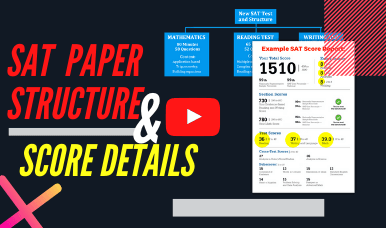Navigating the Landscape of SAT Scores: A Deep Dive into Validity and Reporting Procedures
The Scholastic Assessment Test (SAT) stands as a critical juncture for students aspiring to secure admission to colleges in the United States. Beyond evaluating verbal, mathematical, and writing skills, understanding the intricacies of SAT score validity and reporting mechanisms is pivotal. This comprehensive guide seeks to unravel the nuanced details surrounding the longevity of SAT scores, how to access historical scores, and the various methods of reporting available to students.
Table of Contents:
1. How Long the SAT Score is Valid?
– The SAT score, from a technical standpoint, remains valid indefinitely.
– Colleges, however, may impose varying policies, with some institutions refraining from accepting scores older than 5 years.
– Changes in exam patterns and formats contribute to the nuanced acceptance of older scores.
Explore the SAT Course Book a Free Trial Session
2. How to Get Access to the Old SAT Score?
– College Board archives scores after one year, necessitating a specific process for retrieval.
– Accessing old scores involves a fee payment process.
– Two primary reporting methods are available: Regular Score Reports and Rush Reports, each carrying its associated costs.
3. SAT Score Reporting Method:
– Students can request score reports either via mail or phone, offering flexibility in their approach.
– Mail Reporting:
– Download the archived score report form from the College Board website.
– Complete all sections of the form, including details from the SAT admission ticket.
– Submit the form along with the required payment to the designated College Board address.
– Phone Reporting:
– Contact College Board customer support using the provided phone number for the respective region.
– Furnish necessary details, including the student's name, current address, test date, and registration number.
– Provide credit card information for payment.
– Both methods offer options for students to compare scores from various test dates and select the most favorable one for submission.
4. FAQ: Frequently Asked Questions
– How many SAT attempts are allowed?
– Students are free to take the SAT as many times as they wish, with seven test dates offered annually.
– Is there any age limit for SAT?
– No, there is no age limit for SAT applicants. However, the exam is typically taken by high school students aged between 16-19 years.
– Can I get a scholarship through SAT?
– Meritorious Indian students lacking financial resources can receive SAT scholarships, with a score of 1300 and above typically required.
– Who is eligible for SAT in India?
– College Board does not specify eligibility criteria, but SAT is generally taken during the 11th or 12th grade for admission to undergraduate programs.
While the SAT score is technically perpetual, students must navigate institutional policies regarding score acceptance. The process of accessing historical scores involves a straightforward fee payment. The reporting methods, whether through mail or phone, provide students with options tailored to their preferences. This in-depth guide aims to empower students with a comprehensive understanding of SAT score validity and reporting, ensuring they are well-equipped to navigate the complexities of the college admissions process.
SAT eBook
It is very important to know minor to major facts when starting your preparation for an aptitude-based exam like SAT, with updates that can help with your SAT preparation.
We are pleased to announce the release of TestprepKart's free SAT study guide for the new SAT. This free SAT ebook gives you everything you need to know about the test, from content to content mastery, among the top practice goals you need.





Leave a Reply